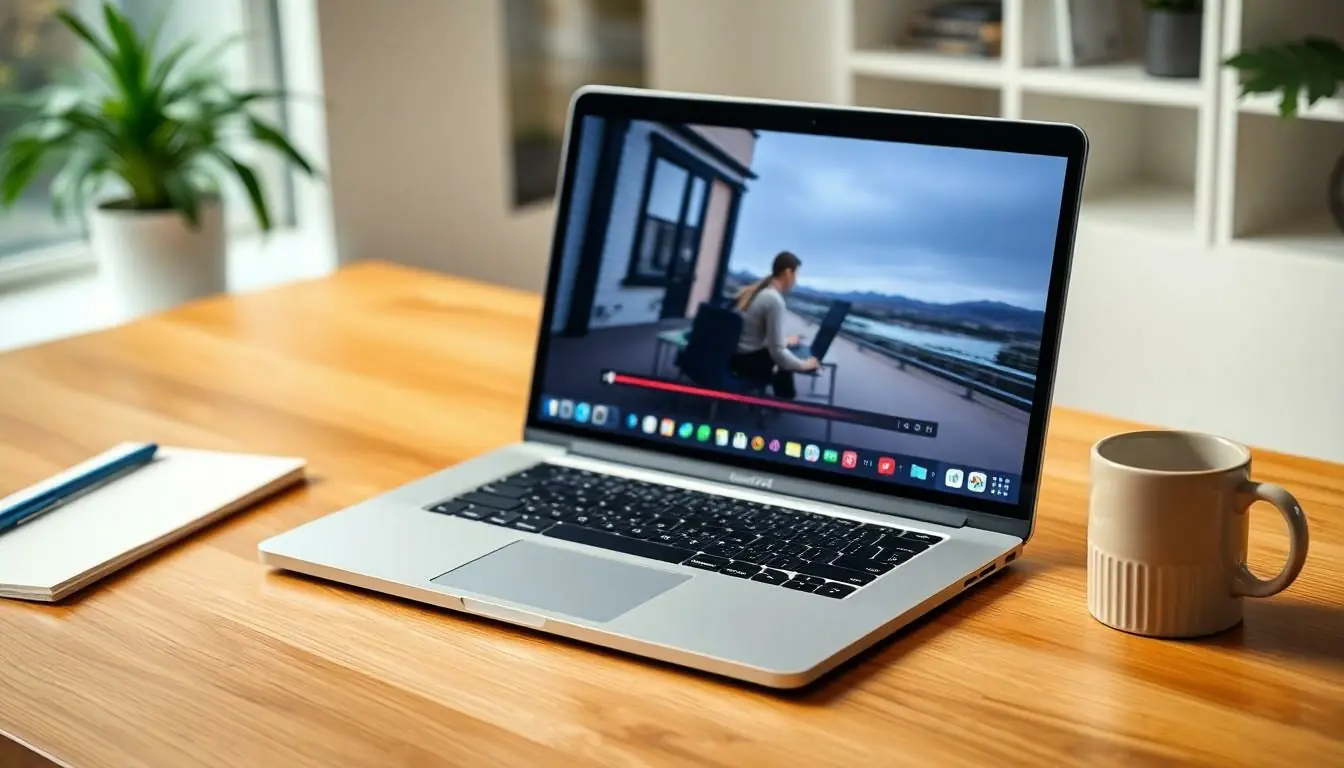Finding a laptop under $150 might feel like searching for a unicorn in a tech jungle, but it’s not impossible! In today’s fast-paced digital world, everyone deserves a reliable device without breaking the bank. Whether it’s for school, work, or just binge-watching the latest series, a budget-friendly laptop can be a game changer.
Table of Contents
ToggleOverview of Laptops Under 150
Finding a laptop under $150 presents unique challenges. Options often lack the performance and durability required for daily tasks. Compact devices exist in this price range, yet many don’t meet user expectations, especially in terms of longevity.
Features typically include low-end processors like Intel Celeron or AMD A-Series chips. Such components handle basic tasks effectively but struggle with multitasking or resource-heavy applications. Many models provide between 2GB to 4GB of RAM, which suffices for web browsing and document editing.
Storage usually consists of 32GB or 64GB eMMC, limiting space for applications, files, and media. Some laptops support expansion via microSD cards but may still falter in speed and performance compared to traditional hard drives. Display quality also varies significantly; expect lower resolution screens with poorer color accuracy.
Battery life often ranges from 5 to 8 hours, just enough for light use but unlikely to last through a full day of work or study. For occasional use, these laptops work well. Regular users, however, might seek better alternatives to ensure efficiency and reliability.
Available brands include Acer, HP, ASUS, and Lenovo, offering models that sometimes exceed expectations. Heavier models might be better suited for desktop replacements. Lightweight options are ideal for portability, making them suitable for on-the-go use.
While the ideal laptop may not exist, those under $150 can serve basic functions. Researching user reviews can provide additional insights into performance and durability. Prioritizing needs over features ensures better purchases in this budget category.
Key Features to Consider

Evaluating laptops under $150 requires careful attention to specific features. Key considerations include performance specifications and build quality.
Performance Specifications
Performance specifications significantly impact usability. Most models in this price range feature basic processors like Intel Celeron or AMD A-Series., These processors allow for simple tasks like browsing the web or streaming videos. RAM options typically range from 2GB to 4GB, which affects multitasking abilities significantly. Limited storage capacity, usually between 32GB and 64GB eMMC, constrains the number of applications and files users can store. Battery life is another critical component, often averaging between 5 to 8 hours. Users must assess these performance metrics to ensure the laptop meets their needs.
Build Quality and Design
Selecting a laptop with good build quality enhances durability. Many budget models use plastic materials, which can feel less sturdy over time. Weight varies, but portability is often a priority, making lightweight designs preferable. Screen resolution typically falls short of higher-end models, with most offering 1366 x 768 pixels. Display size usually ranges from 11 to 15 inches, balancing visibility and portability. Design-wise, users should consider aesthetics and keyboard comfort to facilitate a better experience during use. Overall durability and design play essential roles in user satisfaction.
Top Laptops Under 150
Finding the right laptop under $150 requires careful consideration of features and performance. Several options exist that can meet basic needs while maintaining some level of reliability.
Laptop 1: Features and Performance
The Acer Chromebook 11 offers a lightweight design and impressive battery life, averaging up to 10 hours before needing a recharge. Equipped with an Intel Celeron N3060 processor, it handles web browsing and streaming smoothly. Users find its 2GB of RAM sufficient for simple tasks, while the 32GB eMMC storage meets basic storage needs. The 11.6-inch display provides decent visuals, ideal for casual use.
Laptop 2: Features and Performance
The HP Stream 14 stands out with its sleek appearance and performance. With an Intel Celeron N4000 chip, this model performs adequately for streaming and light productivity tasks. It boasts 4GB of RAM, contributing to better multitasking capabilities compared to others. The 64GB eMMC storage allows for more files and apps, while battery life lasts around 7 hours, supporting a full day of use.
Laptop 3: Features and Performance
The Lenovo IdeaPad 1 serves as a practical choice for budget-conscious users. Sporting an AMD A6 processor, it provides adequate performance for browsing and document editing. It features 4GB of RAM, helping users manage multiple tasks effectively. This laptop’s 64GB storage gives ample space, while the battery typically lasts around 6 hours. Its 14-inch display delivers acceptable visuals for daily activities.
Pros and Cons of Budget Laptops
Budget laptops offer several advantages and disadvantages. Affordability stands out as a significant benefit. With prices under $150, these devices cater to students or casual users needing basic functionality. Lightweight designs enhance portability, making them easy to carry to classes or workspaces.
Performance limitations, however, present a challenge. Most models utilize low-end processors like Intel Celeron or AMD A-Series chips. These processors handle basic tasks well but struggle with multitasking or demanding applications. RAM options only range from 2GB to 4GB, which affects users’ ability to run multiple applications efficiently. Storage limits also restrict usability, as 32GB or 64GB eMMC can quickly fill up with apps or media.
Battery life varies significantly, averaging between 5 and 8 hours. Occasionally, models like the Acer Chromebook 11 can push this boundary, offering up to 10 hours. Lower-resolution displays also detract from the overall experience. Screen quality often lags behind higher-end laptops, reducing visual comfort during extended use.
Build quality remains another concern. Many budget laptops incorporate plastic components, potentially affecting longevity. Users may find these devices less robust after frequent use. Essential features, including aesthetics and keyboard comfort, often take a back seat to cost considerations.
Ultimately, budget laptops serve basic needs but may not satisfy regular users. Assessing individual needs versus performance capabilities is vital for informed decisions. Always researching user reviews before making a purchase ensures uncovering the best options for specific requirements within this price range.
Finding a laptop under $150 can be challenging but not impossible. With careful consideration of specifications and user needs, it’s feasible to discover a device that meets basic requirements for browsing and streaming. The highlighted options like the Acer Chromebook 11, HP Stream 14, and Lenovo IdeaPad 1 illustrate that affordability doesn’t always mean sacrificing functionality.
While these laptops may not excel in performance or build quality, they can still serve casual users effectively. Prioritizing personal needs and researching user reviews are essential steps in making an informed choice. Ultimately, a budget laptop can enhance digital experiences without breaking the bank, making it a worthwhile investment for those on a tight budget.



